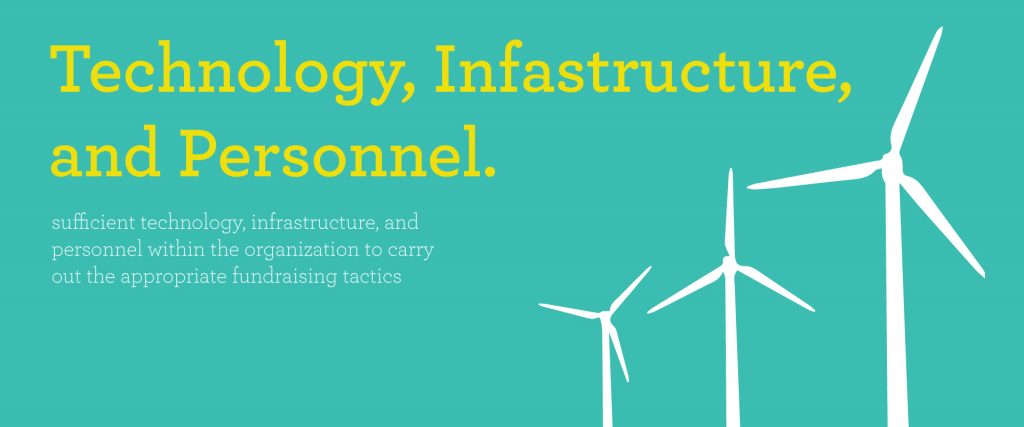If fundraising is an art—the “gentle art of teaching the joy of giving,” as Henry Rosso wrote—then major gift officers are artists. They skillfully build relationships, ask good questions, engage and follow up with donors, and raise transformative gifts for worthy missions. Of course, all great craftsmen require tools. For major gift officers, their tools are technology systems.
Technology does not raise major gifts. Donors don’t give because of an organization’s advanced CRM system or flashy reporting ability. Nonetheless, technology is a vital component of an effective major gifts program. Strong technology makes fundraising more efficient and more scalable. These tools enable development professionals to approach fundraising in a smart, systematic way. It’s the art AND the science.

If you want to elevate your major giving or you’re starting a major gifts program for the first time, follow these steps:
1. Decide what you care about. And then create strategic objectives that define it.
The first step with any plan is to understand and define how you define success. It’s harder than it sounds. Consider holding a planning workshop. In a team setting, define your organization’s high-level fundraising and/or major giving goals. Look both backward (what has been your performance over the last couple of years?) and forward (what do you want to accomplish in the next year or two?). These will be your strategic objectives. Then, define the measures, the initiatives necessary to move the needle, a budget, and timeline.
2. Determine how your objectives translate to day-to-day activities.
Once you’ve established your objectives, ensure that they are realistic, using a bottom-up approach. Consider the implication of your goals on daily activities. If you want to raise a million dollars, how many gifts will you need? How big do they need to be? How many prospects will you need? How may prospect managers does that translate to? How much research will you need? Identify the metrics that are important for your strategy. Some examples:
- Number of major gifts needed
- Goal for average and median major gift size
- Close rate
- Number of qualified prospects needed (and the research needed to qualify them)
- Number of prospect managers needed
- Average life cycle of your donors (how long will it take to cultivate and fund the ask?)
Together, your top-down objectives and bottom-up measures will create your fundraising blueprint.
3. Set up your systems to monitor and manage the plan.
You have your blueprint; now it’s time to “build your house.” The metrics you established define how you configure your CRM and related systems. This begins with a solid code schema—the structure that aligns with your plan. For some databases, this may mean rethinking (or beginning to think about!) the proper use of campaign, appeal, fund, designation, gift attribute—the list goes on. This process is akin to tailoring a suit to fit your measurements. But you may find that your current suit no longer fits. If that’s the case, you can use this process to define your database needs and find new technology. Check out Benefactor Group’s guide to choosing a new system.
4. Define and build reports and dashboards.
Winston Churchill said it best: “However beautiful the strategy, you should occasionally look at the results.” You’ve set your objectives, defined metrics, set up your systems, and tracked every touch point and gift. Now you need to ask yourself and your systems: how are we doing? What questions do we need to answer to understand how we are doing? (Hint: look at the metrics and targets you set up in step two.) Define the reports, queries, and dashboards your team needs to get quick, concise answers. Run these reports regularly; use them as part of meetings, and evaluate/adjust/improve your organization’s major giving strategies based on actual performance. Your data can offer valuable insights, but it does not accomplish anything if it never leaves your CRM.
5. Make it a team effort.
Make the technology accessible. Equip your team with the skills, training, and coaching necessary to use the systems and reports. Look at the reports not as clubs, but as levers. Continued coaching and support will empower your team to be effective, productive, and happy.





